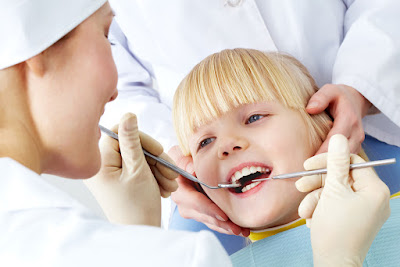Category: tooth decay
Is Your Child A Good Candidate for Dental Sealants?
The Center for Disease Control and Prevention notes that 70 percent of children will experience cavities in their teeth by the age of 19. If left untreated, these cavities can lead to tooth loss and a lifetime of dental problems. Dental sealants are an option that protects the chewing grooves of the teeth from getting cavities.
Understanding Dental Sealants
A dental sealant is a thin, plastic coating that is applied to chewing surfaces to prevent the tiny grooves and fissures in young teeth from developing cavities. These sealants bond into the small depressions, protecting teeth from bacteria that cause dental caries (cavities). The sealant is applied on teeth after cleaning any food or plaque from it.
The teeth are first roughened (etched) with an acid wash, and then, the sealant is painted onto them. It is then allowed to cure using a curing light. These sealants can last as long as 10 years and will protect the chewing, cheek or tongue surface of the teeth as children grow into young adulthood.
Dental sealants are an underused resource that can help children who have difficulty cleaning back teeth or who are vulnerable to cavities. The surfaces in between the teeth cannot be sealed so flossing is still the best way to protect the teeth from interproximal cavities.
Sealants Go Where Dental Caries Happens
Newly erupted teeth may have many very small grooves and indentations that catch food and may be difficult to clean properly. The teeth at the back of the mouth, in particular, can hold food debris that allows bacteria to thrive.
Sealing the chewing, cheek or tongue surfaces of back teeth ensures that bacteria will not be trapped in these mini crevices. Sealants can be particularly important for children who have thin tooth enamel or a tendency toward developing cavities easily.
Ongoing Preventative Care for Children
Dental sealants should be applied on newly erupted permanent molars and pre-molars. This generally occurs between the ages of 6 and 14. Sealants applied at this time can protect children’s teeth during these cavity-prone mid- childhood years. Dental sealants can be a useful part of preventative care for children’s oral health. They can provide that additional measure of protection against tooth decay that can lead to tooth loss.
Your child can enjoy oral health throughout his or her life if you form good habits early and visit your dentist regularly. Dental sealants can be part of the ongoing care your child needs to maintain an attractive and healthy smile. Call Playtime Dental today to schedule an appointment for your kiddo or if you have any questions!
What Causes Bad Breath in Children?
When you think of baby breath you think of something delicate, airy and sweetly pleasant. But in reality, that’s not always what you get.
Even healthy children sometimes experience bad breath. But if your son or daughter has persistent bad breath, it could point to improper dental hygiene.
Common Causes of Bad Breath
The first and most obvious cause of bad breath in children, as in anyone, is unhealthy oral habits. You should teach your child from a very young age to always brush their teeth and tongue so that bacteria does not build up and bad odors are prevented.
Let your child know that brushing the tongue is just as important as brushing the teeth. Supervise the brushing to make sure they are doing a good job. Make sure children know from early on that regular care of the mouth is a normal part of each day.
Eating foods that have strong odors can also cause bad breath. If children are brushing regularly after every meal, this will help with that problem, regardless of what is consumed.
If your child is sick, there are two possible sources of bad breath — the medicine he or she is taking, or the infection/condition itself.
Check your child’s mouth regularly to make sure they don’t have any cavities, sores in the mouth or plaque build-up, all of which can contribute to bad breath.
Preventing Bad Breath
It is the saddest thing to see a very young child with stained or rotting teeth. This is something that might affect them for a lifetime and could have been prevented with proper care.
Don’t wait until your child has an obvious problem before acting. Take your children to the dentist now. Teach them that their dentist, just like Officer Friendly, is indeed their friend.
You should encourage children to floss daily and take good care of their teeth so they can proudly brag when they visit their dentist and look forward to getting a new toothbrush.
The routine at Playtime Dental is designed to make your child’s visit fun and entertaining. If your child needs a dentist appointment, give our office a call today. We are currently accepting new patients!



